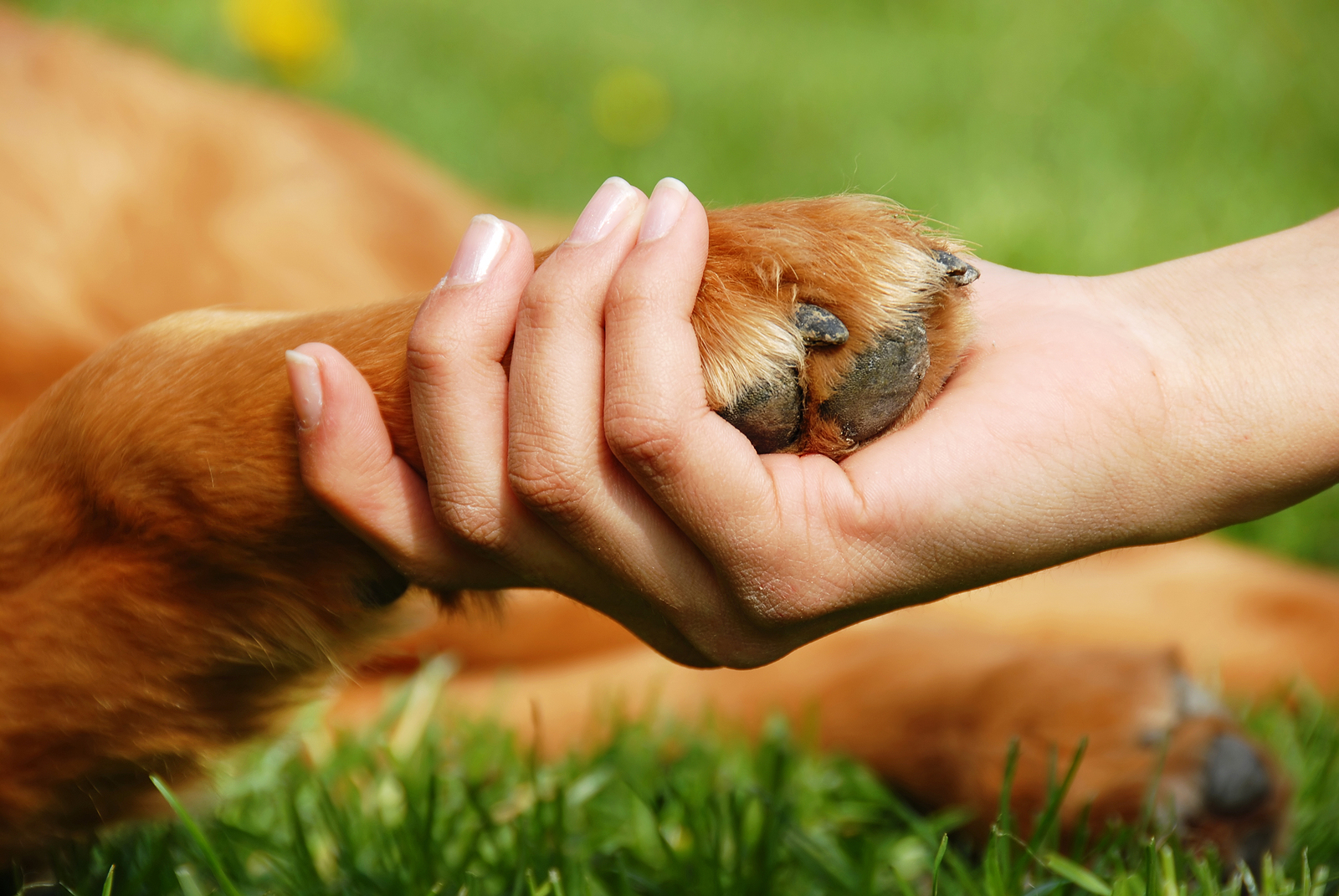 Share on Facebook
Share on Facebook
 Question
Question
My nine-year-old Bulldog, Scully, has developed a large painful lump between her first two toes. Can you suggest any natural remedies?
R.L., via email
Answer
Large lumps that form between the toes, typically in the webbing of the front paws, are common in dogs and known as interdigital furuncles or interdigital cysts.
Most are caused by a bacterial infection, but others may be due to allergies, mites, ingrown hairs, foreign bodies like thorns or grass seeds, or even from excessive licking between the toes as a result of stress or irritation. In some cases, these lumps can also be benign or cancerous tumors.
Overweight dogs, hairy breeds and those prone to hypothyroidism (an underactive thyroid) may also be at increased risk of developing these furuncles.
Top tip
In many cases, interdigital furuncles can be prevented by cleaning your dog’s feet after walks (use a saltwater foot bath or some aloe vera wipes) and by checking them daily for splinters, thorns, grass seeds, insects or any other foreign body. This is especially important for long-haired breeds.
Signs and symptoms
Besides lumps between the toes, which can be red or purplish, excessive licking of a particular foot, limping and intermittent lameness can be signs of furuncles. If your dog has lots of hair between the toes, it may be hard to see these lesions, so it’s a good idea to check your pet’s feet regularly, especially if they seem to be grooming them excessively.
Diagnosis
It is always best to get a lump between your dog’s feet checked by your vet, especially if it doesn’t respond to some simple home remedies (see page 61).
If the lump is growing rapidly and feels hard, your vet may perform a fine needle aspirate or a needle biopsy to rule out cancer. If your vet is convinced that there may be a grass seed, thorn or any other foreign body lodged between the toes, she may want to explore the lump to extract it.
X-rays may also be warranted if the lump is hard and seems to be well attached to the bones of the toe, as bone cancer can start off as a small lump, although this is quite rare.
If your vet suspects mites, it may be necessary to take skin scrapings to look for the mites microscopically.
Conventional treatment
Antibiotics, likely a combination of topical and oral antibiotics, are the usual treatment if the cause is an infection. Nonsteroidal anti-inflammatory drugs like carprofen or meloxicam may also be given if your pet is in pain and the infection is deep.
If the lesions are complicated by yeast like Malassezia, then an oral course of antifungal meds may be prescribed. Injections of Cytopoint (a monoclonal antibody therapy) may be necessary if the underlying cause is atopic dermatitis.
Surgery may be needed if a tumor or a foreign body is suspected or if the lump does not respond to antibiotics or steroids.
Your pet may be required to wear an E-collar or Buster collar to prevent her from biting or licking her feet, as the lumps can be very itchy and painful, and self-trauma will make it worse and prevent healing.
Natural remedies
If your dog has already been checked out by your vet and it’s a mild, uncomplicated case, here are some natural remedies you could try for interdigital furuncles.
Epsom salt
Also known as magnesium sulfate, Epsom salt is a simple but effective treatment for these lesions, helping to draw out impurities from the area. Add some to a foot bath for your dog two to three times a day.
Apple cider vinegar
Well-known for its antibacterial and antifungal properties, apple cider vinegar can also be used in a foot bath. Add one cup to warm water and stand your pet in it for 30 to 60 seconds once a day.
Herbal tea
Chamomile, echinacea, goldenseal or green herbal tea rinses can work well as a treatment or preventative. The astringent, antioxidant and anti-inflammatory properties of these teas help to reduce inflammation. Add four tea bags to a gallon of water and soak your dog’s foot in it for 30 seconds.
Natural shampoos
Natural and organic dog shampoos containing soothing ingredients like aloe vera and chamomile and antibacterial essential oils like oregano and tea tree oil can help. Try 4Legger Dog Shampoos (available from www.4-legger.com in the US and www.healthfulpets.co.uk in the UK) such as the Moisturize shampoo, which contains aloe vera juice and hemp oil to calm the skin as well as lemongrass essential oil for its antibacterial and antifungal properties.
Bentonite clay powder
This can be applied between the toes after cleansing to keep the area dry. Plus, the sodium and calcium in the powder help draw out impurities.
Aloe vera gel
Dogs with skin problems such as eczema and dermatitis respond well to aloe vera. Since aloe vera contains natural antihistamines and has antiseptic properties, mainly thanks to saponins (a soapy substance that acts as a cleansing agent), itchiness can be reduced, which in turn helps to soothe and calm the skin.
Aloe vera basic gel
Here’s a simple healing aloe vera gel recipe for dogs.
Ingredients
A large handful of aloe vera leaves
½ tsp xanthan gum
½ tsp vitamin C powder
Directions
1) Break open the aloe vera leaves and scrape out the inner sap—this can be quite fiddly as the sap is slippery.
2) Place the sap in a blender, add 2 Tbsp water, the xanthan gum and the vitamin C powder. Blend together until a thicker, gel-like consistency is achieved.
3) Store in a labeled, airtight glass jar in the fridge for up to one month.
4) Apply topically to the affected area between the toes twice daily after cleaning and drying the area.
Noni lotion
Pets Noni Lotion by Hawaiian Organic Noni (www.realnoni.com) is derived from the noni fruit and has soothing, antibacterial, antifungal and analgesic properties. Apply it directly to the cyst or sore areas.
CBD salve
Remedy by CBD Dog Health (www.cbddoghealth.com), only available in the US, is a “300 mg Full Spectrum Hemp CBD Salve” made with 100 percent natural ingredients designed to provide relief for tumors, cysts and infections in dogs. It’s even been known to shrink cysts and tumors.
Apply liberally to the affected area two to three times daily.
Top tip
For any topical spray, ointment or salve, apply it just before feeding your pet or taking them on a walk, as they will be distracted and more likely to refrain from licking off the product.
If you can leave a collar on and prevent licking even for 15 minutes post-application, this will accelerate the healing process.
Essential oils
Dump-a-Lump by AnimalEO (www.animaleo.info), available in the US, is a blend of essential oils including frankincense, myrrh and sandalwood that may help to shrink cysts, warts and other lumps. As this is a neat preparation, it needs to be diluted with fractionated coconut oil. Apply it to the cyst or lump several times daily for one week.
Colloidal silver
Colloidal silver, known for its antibacterial and antifungal properties, can be sprayed between the toes to help prevent and treat furuncles. Try Colloidal Silver for Pets by Glacier Peak Holistics in the US (www.glacierpeakholistics.com) or Nature’s Greatest Secret Colloidal Silver for Pets in the UK (www.naturesgreatestsecret.co.uk).
Chinese herbs
Four Marvels by Kan herbs, available via some holistic vets, is a Chinese herbal formula that helps with interdigital dermatitis. I recommend consulting with a vet trained in traditional Chinese veterinary medicine to determine the right formula for your dog.
Laser therapy
CO2 laser therapy, available via some vets, has been demonstrated to successfully treat some types of interdigital cysts.
Rohini Sathish, DVM, MSC, MRCVS, MHAO, MCIVT
Dr Sathish is an award-winning holistic vet with 22 years of experience. After training in acupuncture, acupressure, energy healing, Emotional Freedom Technique (EFT), animal communication and herbal medicine, she now actively integrates conventional veterinary treatments with complementary therapies and is co-author of You Can Heal Your Pet (Hay House UK, 2015). You can contact Dr Sathish at her website: www.rohinisholisticvetcare.com




